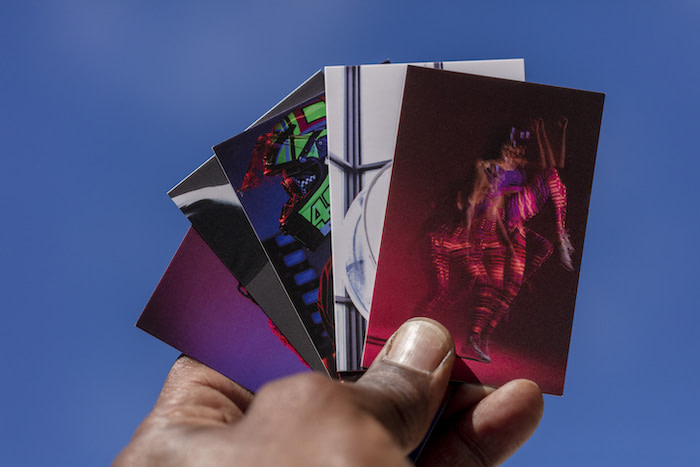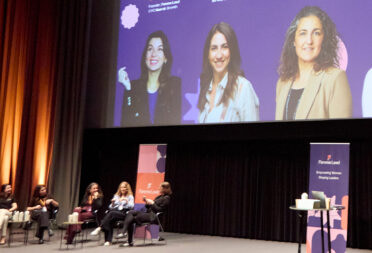Steve Carty: portrait photography that captures authenticity
We met Carty to talk about his journey and how he became a sought-after portrait photographer.
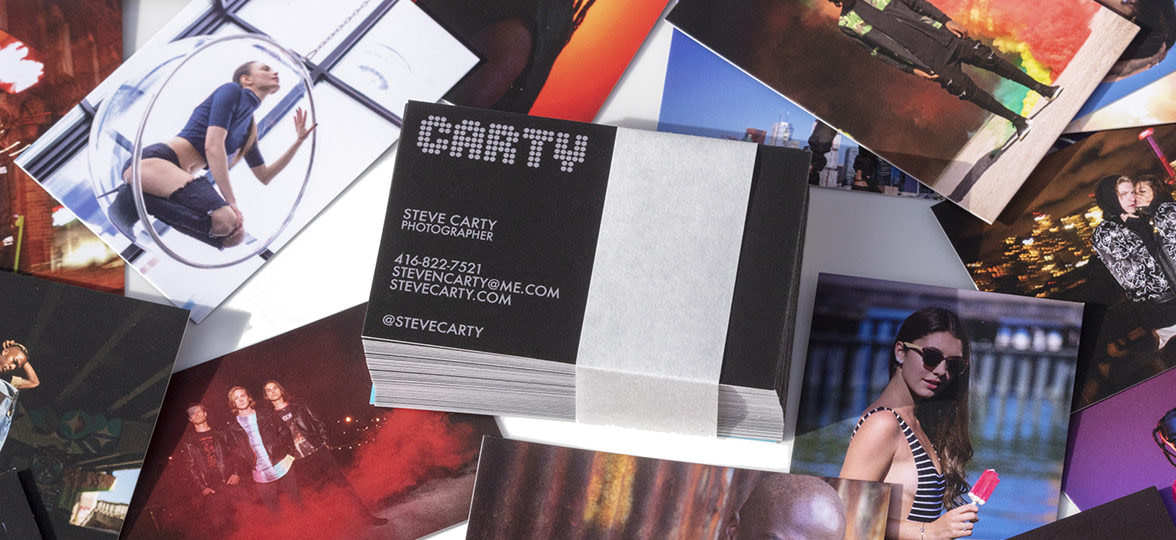
Steve Carty took up photography as a teenager because he couldn’t paint. It proved a wise move. With talent, hard work, and a good dose of chutzpah, he’s become a sought-after portrait photographer in Toronto and beyond. With his vibrant, honest portraits he aims to capture the very essence of his models – which have included the likes of Pharrell Williams, Thom Yorke and Colin Firth.
We met Carty to talk about his journey as a portrait photographer, his artistic process and the clever ways he promotes his work.
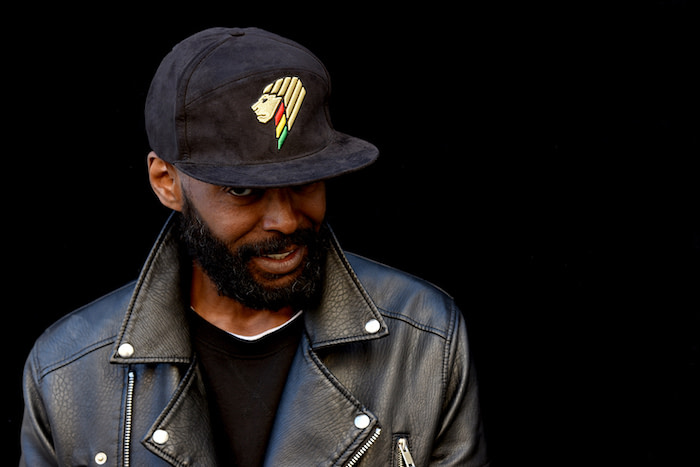
Tell us a bit more about yourself. How did your interest in photography begin?
I started taking pictures when I was 14. My older brother Les is a photorealistic painter and was extremely talented from a young age, so he went to a school where his talent could be cultivated. I wanted to be just like him but, unfortunately, I couldn’t paint. My Pop bought a 35mm camera as all Dads were required to do in the 80’s, and sadly, he couldn’t even turn it on. I helped him figure out how to turn it on, focus, and take pictures. Weeks later, he took the roll of film in, and when it was developed, he shared the shots I took with his new toy.
Seeing my images appear in print form was all it took.
Seeing my images appear in print form was all it took. At my young age, I truly thought my brother was wasting time and so much effort making his paintings look like photographs when all I needed to do was take a picture! My Dad rarely got to play with his new toy after that. It became a thing I was really good at.
In high school, I enrolled in a photography class and my teacher, a very talented photographer in her own right, was the first real person to spot my talent. She said: “you could be a photographer!”. My career path was set, I told my parents I wanted to be a professional photographer. When I saw Vogue for the first time, I was incredibly inspired. At 19, I went onto Ryerson University where I studied still photography, and soon after opened my first studio with my brother, who continues to be my biggest artistic inspiration and influence.
How did you land your very first gig as a photographer in Toronto?
My first gig as a photographer happened when I was 19. I showed my fashion portfolio, which at that time was a collection of pictures I took of friends and anyone that would sit in for me, mostly shot in my makeshift home studio, to a massive modelling agency here in Toronto. It was first thing in the morning. The agent looked at my portfolio and literally laughed. Then she said wait here, and went into a back office, shared with her other agents and then they all laughed. I could hear them. It was brutal. Then she came back and gave me my portfolio and literally said, thanks, I needed that laugh. I was a kid. I was devastated.
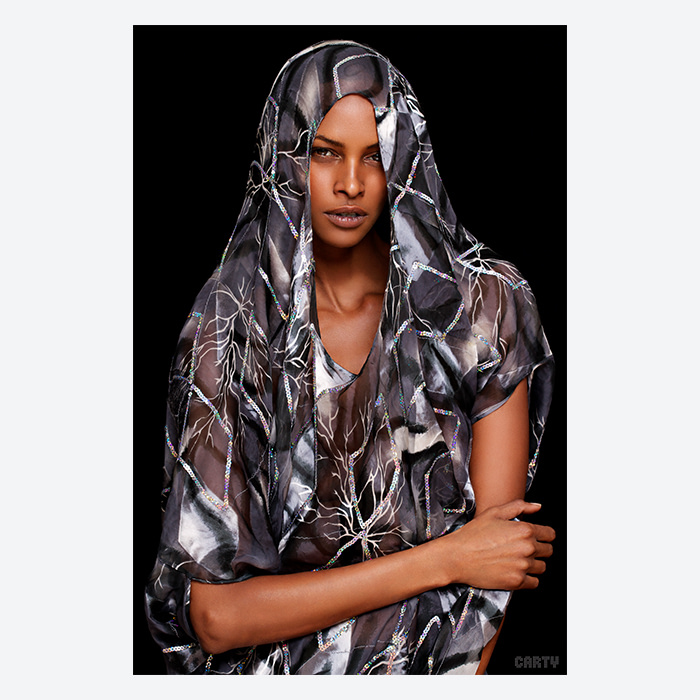
I had a second appointment that same day with another modelling agency and I literally had the phone in my hand to cancel. I said to myself “screw it, there’s no way I can get humiliated twice in one day.”, so I kept my appointment with the second agency. That agent, Celia Sears, had just found out she was pregnant with her first child. She was in a brilliant mood. She expressed quite honestly that my book was terrible, but she saw my potential. She showed me some real model portfolios. I was blown away. Then she did the thing that started it all: she gave me 2 new models to shoot. I set up the shoot, shot those models, shared the work with her, and she kept sending me models! At 19, I had just figured out a way to shoot for a modelling agency.
You started out doing fashion photography. What attracted you to portrait photography?
I love that you’ve done your research! I landed my first real win and transitioned into primarily being an editorial portrait shooter by showing my fashion photography work to Canada’s national newspaper, the Globe and Mail. The art director at that time looked at my fashion work and said “hey, great portfolio.” Then he sent me out to shoot a portrait, a job which I happily accepted. The images were well received, and on the spot, he sent me another portrait assignment. Before I left the office, I said to him “hey, you know that I’m a fashion photographer right?” He replied: “any hack with a camera can take perfect pictures of perfect models in perfect situations with perfect hair, makeup, clothing and light. It takes a real photographer to capture the rest of us. What kind of shooter do you want to be?”

I was 23 years old. This was life changing. I went on to shoot some of the most powerful and timeless images of my career for the Globe and Mail. Portraits of people like Roger Moore, Phil Collins, and Thom Yorke from Radiohead – all in black and white, all on film, never with any second chances.
How would you describe your style of photography? What do you want to express with your work?
Describing my own style of photography? It’s so much better when others do so, but I’ll explain it the best I can. I have a straight-up approach to making pictures that is timeless, modern and honest. It’s an understated approach, where my subject is the star and my role is simply to capture them in the most iconic and classic way. I have a strong technical ability, so I’m able to adapt quickly on location, and place and craft light in a studio – that allows my work to be recognisable without feeling boring or repetitive.
I’m always evolving, learning and trying to push my work to keep it fresh and inspired
I do have set styles, like my signature jet black background which I’ve been using to help my subjects pop out of the page since my early days as a photographer in the 1990s. It’s a style and vibe I’ve repeated throughout my body of work. I like to think I’m good with light and conceptualising, but I’m always evolving, learning and trying to push my work to keep it fresh and inspired.

I’m in the business of “people promotion”. I can capture a person’s essence, quickly and often under pressure, so I’m often called upon to photograph yesterday’s, today’s and tomorrow’s stars. I also help “everyday” people elevate their personal brands so they can compete on a world stage, whatever it is they do. I bring celebrities back to earth with a realistic, honest approach and boost regular people by making them feel like superstars in front of my lens. My favourite part of the job is being someone’s favourite shooter. Feeling the love from a subject I’ve just met, just because I captured them in such a positive light, is incredibly fulfilling. Everyone is a star. Every session is the most important.
How do you prepare for photoshoots? What’s your favourite part of the process?
My preparation for photo shoots ranges greatly. It can go from one extreme to the other. From mood boards and visual inspiration, to client production meetings, more reference photos, sketches, all the way to the simplest idea I’m feeling while I walk with a subject on location looking for the right light, background, and vibe. I believe if you can’t find a spot to make magic within a 2 block radius of where you’re currently standing, you have a lot of work to do.
I like to create amazing atmospheres […], and much of it is my relationship with my subjects
I see locations daily, some I make mental notes of, some I shoot with my phone, some I spot while I’m moving to the original location, moments before I shoot. I allow accidents to happen. The best-laid photo plans rarely work out exactly. I like to create amazing atmospheres for great portrait photography to happen, and much of it is my relationship with my subjects, getting them comfortable with me, especially moments before I shoot. I’m always real. I have to find that common ground quickly.

At this point in my career, I really enjoy the process of making pictures in a found spot within an area I’ve dropped us in. I allow light and concept to reveal themselves organically. Mixing that with my studio look and feel makes photography worth it for me.
You photographed celebrities such as Thom Yorke and Pharrell Williams. How do you get people to open up in front of a camera?
It’s all about approach. As I touched on earlier, I’m fast. I see the idea quickly and spend most of my time, especially with celebrities, allowing them to talk. I try to draw them out and I listen. There’s nothing better than allowing your subjects to tell you a story.

They talk while I’m setting up, they talk while we move to the location, they talk all the way up to when I’m about to shoot my first frames. Most subjects don’t even notice what’s happening, and everyone loves talking. When I get them in the final spot, light or area, I shoot more tests.
For pros, 10 out of 10 isn’t good enough anymore
I’ll share the first “11 out of 10” images with my subject. For pros, 10 out of 10 isn’t good enough anymore. I have to shoot 11’s. As soon as my subject sees an 11, I have their full attention. I have them. I work super quickly, on location I move a lot, and I continue to show only 11’s and I’ll keep pushing for the highest form of the idea, shooting through the picture. I don’t stop on my first banger. I keep going. It’s how I’ve created my most iconic images.
You’ve been a photographer for more than 20 years. How do you feel photography has evolved over time? What are you excited about for the future of photography?
It’s actually my 30th year in business, so I’ve seen a lot. My first 20 years of photography training (from age 14-34) was all centred around film, including all my early studies of the history of photography and all my assignments at Ryerson. I didn’t touch a computer until I was 24, and only then to make invoices. When I started there was no internet, websites, or email. Phones were attached to walls and you had to lug around heavy hard copy printed portfolios. When I was 20 I got a Hasselblad (medium format camera) and developed all my own film until volume made it impossible. I always printed my own work. I’m a master printer, with 20 years experience manually printing both colour and black and white.

In 2004, I began my change over to digital. Since then, the look of photography has changed a lot. Digital photography has opened up a world of possibilities for image makers, and seeing your images as you take them has made it much easier for people to get into photography without formal training. In the beginning of digital, it seemed like everyone with a camera thought they were a photographer. With most things, it’s levelled out a bit, with the talent still always rising to the top.
Mobile phone photography has had a similar effect, but that is levelling out as well. Most of us can spot facetuned or heavily post-processed images and categorise them accordingly. Some of my subjects definitely need to learn how to be in front of someone else’s camera, as most only take images of themselves by themselves or with friends, never getting any professional advice or feedback beyond social media likes or comments. It’s sad having to explain to a subject that I’m not going to shave hips, or add lips. It’s important for me to show real beauty, real people. It’s stylised reality but the work I make is never straight lying.
I’m excited by the way video has truly pushed how we can get our message out as creators
Looking towards the future, I’m most excited for photography to be seen more as a craft and less as something you just put on Instagram. I’m excited for the next generation’s work to shift the vibe, as it already has. I’m excited by the way video has truly pushed how we can get our message out as creators, by both speaking to the camera and making our visuals move. I’m excited by new camera tech, and how it’s filtered down from unattainable to accessible. I’m most excited about how we as creators can evolve the way we use photography to tell our stories.
How did you manage to grow your reach as a photographer? How did you approach your promotion strategy?
Growing your reach as a photographer is an ongoing and never ending movement forward. Since my first website way back in ’96 I’ve always tried to be at the forefront of technology and to use the latest ways to promote my work. I remember when I emailed my first photograph to an art director – it took 10 minutes to push through that 200KB file!
My website has been the main way potential clients discover my work, so I make sure to always update it and keep it fresh. I’m an editorial portrait specialist, so making sure my site comes up in the top search results in “editorial portraits, Toronto” is always important. There was a time when unsolicited emails were commonplace, so emailing potential clients usually got good results. Today, social media is king, so it’s important for me to have a strong presence on Instagram, and to constantly be massaging that feed. I wish Instagram didn’t have so much power over us with their strange algorithm, but as a shooter, I need to feed that beast to get noticed. Insta always pushes their latest offerings and currently it’s all about Reels. I’ve noticed a great amount of attention to my feed when I post Reels, way more so than posting to my regular feed.
YouTube is a great way for shooters to promote in this age of video domination
I’ve always posted the video content I create for clients to my YouTube page, and recently I’ve felt the pull to start talking to camera, offering a new perspective on the life of a professional content creator. It’s called Behind the Picture and I’m beginning to start that dialogue and upload to my channel. YouTube is a great way for shooters to promote in this age of video domination, so I’m jumping on that train to offer some of my perspectives.
The ongoing promotional strategy is to use video to promote all my offerings in creative and easy-to-digest ways. All without taking myself too seriously. I still reach out to potential clients, but being discovered or shared is key.
Can you talk us through how you use MOO to promote your work?
I use MOO for all my printed material, from my Business Cards to my Postcard promos. I’m able to show the full range of work that I do using the Printfinity option. I use the full 50 different fronts on my business cards orders so I know I have the right card for anyone that I could possibly meet.
I always have my cards on hand and I give a stack that includes the whole range of fronts to whoever I’m giving a card to. This allows potential clients to look through the different cards and choose the one they want, and it pretty much guarantees they’ll keep it. It allows me to show work from portraits to streetwear, and even my commercial work. They’re willingly forced to see my entire portfolio, and they happily pick their favourites, sometimes asking for more than one, usually to share with someone else that could use me.
These MOO cards for me are like little seeds. You give one out and a seed is planted.
I’ve heard stories from clients who have kept my cards on their art boards for years, and the fact that they got to choose their own seems to make our meeting something really memorable for them. These MOO cards for me are like little seeds. You give one out and a seed is planted. You never know how fast that seed will grow into a client but it always seems to happen.
MOO Postcards are bigger, with a huge impact. I use them as mailers, leave behinds, as well as thank you notes – again, all with different fronts targeted to a specific client range. The great thing about my cards is they always start a conversation. “They’re so great”, “What a great way to show your work”, and “How’d you get these done?” are the 3 comments I regularly hear.
I always send people to MOO, especially fellow creatives, because the offerings are unparalleled – it’s why I’ve been using MOO for well over 10 years. I’ve converted numerous creators to this promo format and all are still using it. It’s really a no brainer!
Do you have any projects coming up you’re looking forward to?
Upcoming projects are a bit in the dark during this crazy time. I’ve always used slower times to develop new offerings, techniques and personal work. My biggest upcoming project is my push on YouTube. It’s a non-linear promotion strategy that starts with me being in front of the camera and sharing insights on my life behind my pictures.
Some of the things I’ve shot recently which are just now reaching the public’s eyes include my images of George Stroumboulopoulos – aka Strombo –, which are being used to promote his new Apple Music Radio show. Another one is the promo images for the upcoming 4th season of the Great Canadian Baking Show, live on Netflix in Spring 2021.
I’m all about being in the lab right now, planting seeds and growing new ideas
Winter for creatives here in Canada involves slow downs at times. The darkness of winter is hard for many creatives, and I’m one of them. Add in Covid lockdowns and upcoming projects become more unpredictable and the situation is more challenging. Whenever my commercial work is a little slower, I know it’s the time for me to dive into self-directed personal projects, self promo, and strengthening my online presence. I’m all about being in the lab right now, planting seeds and growing new ideas.

One of my self directed projects, Multiplicity, is ongoing and I’m looking forward to adding to it this winter. It’s multi exposures on the same frame, all done in camera. I’ve been working on this technique for over 5 years. All my experimental work is done in camera, and always ends up being incorporated into my commercial work. This ongoing project is one of them.
Any advice for young photographers trying to get their work out there?
Advice for young photographers starting out now is much different than photographers starting out when I did. Social media is king. New shooters have the tendency to try to shoot everything. Having a body of work that ranges from weddings to cars to fashion to real estate to headshots and products and composites and and and… just results in being forgotten or missed all together. The biggest bit of advice I could offer is to create work that can be categorised and applied. Applied photography is work that gets work.
You have to be the best in your category. Be the best car shooter you can be. Or the best beauty shooter. Or the best product shooter – but don’t try to be all three.
Every top shooter that is a household name got famous for making one picture. As in one strong idea, one strong visual signature, applied to everything they shoot within that category. Specialise in fashion? Shoot it in your exact way. Portraits? Same thing. Art buyers want specialists, not generalists. They want the best in the category. You have to be the best in your category. Be the best car shooter you can be. Or the best beauty shooter. Or the best product shooter – but don’t try to be all three.

Hone your look, your style, your visual signature. Every single one of your favourite shooters works this way. Look again at the work of photographers you admire and notice that their “style”, their visual signature, is the real reason their images grab you. Their subject matter usually comes second.
A strong visual signature and a strong online presence is the formula for getting your work out there
Our style as content creators has to be consistent. If you’re creating a look and feel that is of the moment, your work will get noticed. A strong visual signature and a strong online presence is the formula for getting your work out there. Non-linear promotion is the future. Also respect your elders, find a mentor, don’t give up, always be learning, grow with the times, roll with the punches, stay positive and call your mom.
Showcase your portfolio in style with MOO Business Cards and Postcards.
Keep in touch
Get design inspiration, business tips and special offers straight to your inbox with our MOOsletter, out every two weeks.
